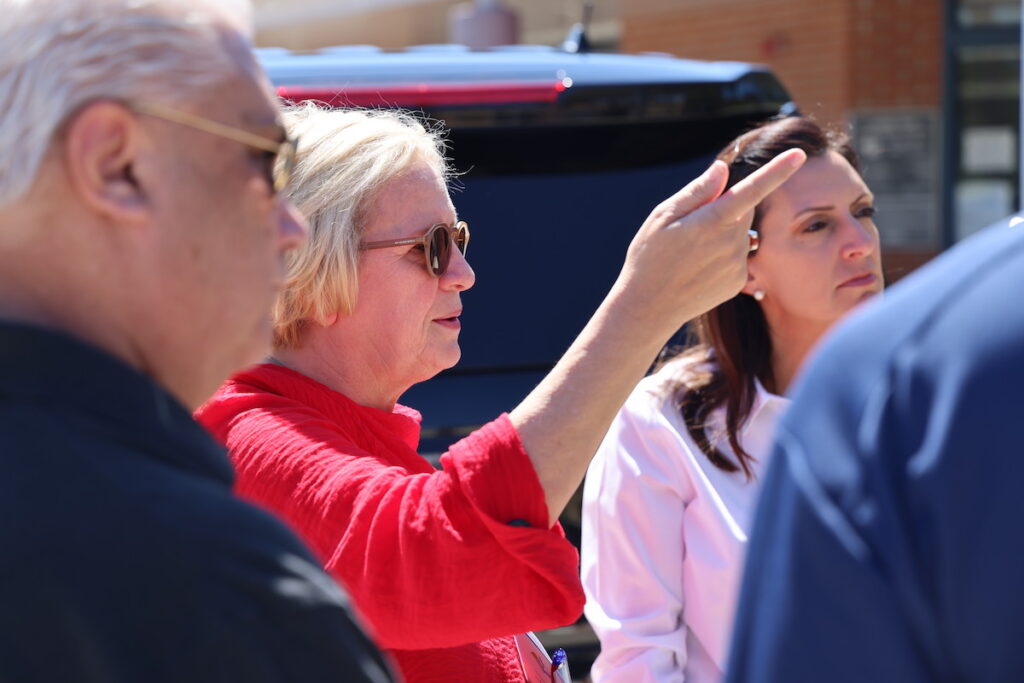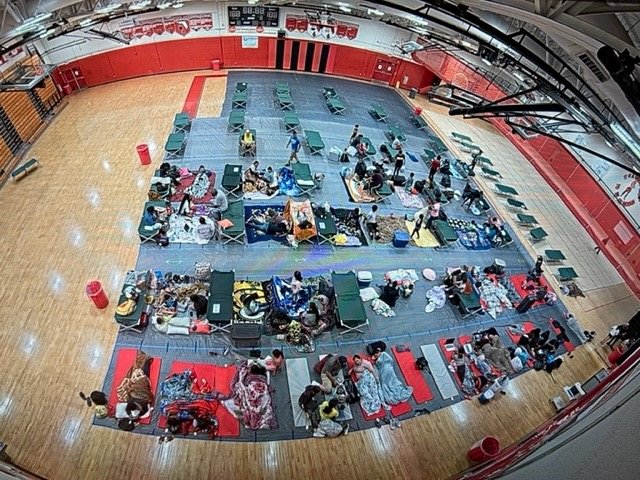Collier County Schools avoided a direct hit from Hurricane Ian, but a substantial number of the Southwest Florida district’s teachers and staff members did not. Those employees live on the north side of the county line in Lee County, where many neighborhoods were devastated by record storm surges, unprecedented flooding and destructive winds. Power and water still remain scarce in those neighborhoods almost a week after the historic storm made landfall.
Still, many of those teachers will be in their Collier County classrooms when the district reopens on Thursday. That’s because of partnerships Superintendent Kamela Patton and her team put in place long before hurricane season began. This week, community organizations that provide afterschool programs are opening full-day camps for the children of Collier County Schools teachers, bus drivers, food service workers, administrative employees and other staff. Another district partner is covering all the costs, Patton says.
“When schools are up and going, the community can get back to normal more quickly,” says Patton, Florida’s 2022 superintendent of the year. “We’re the largest employer, we’re the economic driver—when we’re up and running, parents can get back to their jobs, more stores can open and businesses have their employees back.”
The camps also mean district staff won’t have to use up sick time or vacation pay to care for their children while schools in the neighboring counties are closed. Patton is also hoping to convince the state to somehow give educators priority access to essentials such as gasoline, which is hard to come by in Lee County. If staff can’t get to their schools, Collier’s administrators, literacy specialists and others are ready to step in to fill classrooms. Teachers in the district are also allowed to transfer unused sick days to friends and colleagues who are in urgent need of time off.
“We know how many of our staff intend to be here when we reopen,” she points out. “But in Lee County, the gas lines are hours long and it’s another issue to work all day and then sit in a gas line for two to three hours.”
Collier County Schools’ COVID-driven effort to supply all students with laptops and WiFi connections is also paying off this week. Its Keep Learning Alive program, originally developed to prevent “summer slide,” offers virtual learning activities to occupy students while their families are cleaning up their homes and businesses. “It may not be the exact lessons their teachers were covering but they can continue learning by grade level and by subject,” she says.

And even though Collier County Schools were still closed on Tuesday, the district opened its fields and athletic facilities so teams could hold voluntary practices. Football teams will play regular games on Friday as a start to helping their communities return to normal. To further assist families within Collier County, the district will serve free lunch to all students throughout October. “Many kids have not had stable food for the last number of days,” Patton says.
Everyone who has lived in Florida for any length of time has some experience coping with hurricanes. But Patton and her leadership learned a whole new set of lessons after Hurricane Irma made landfall in Collier County as a Category 3 storm in September of 2017. The district, which is about the same size as the state of Delaware, now has plans for storm preparations to complete as far out as 10 days before the storm is forecast to make landfall. For example, prior to last week’s storm, staff removed sunshade awnings from the district’s playgrounds because that same equipment was heavily damaged by Irma. Staff also ensure all school dumpsters are emptied to reduce the amount of dangerous debris that can be blown around by hurricane-force winds.

Also, the workers who will staff the schools that are used as storm shelters are assigned to their posts long ahead of time, and all schools are organized by the buddy system. The latter plan allows schools that aren’t located in flood zones to assist and accept students from buildings located in more threatened areas. Finally, the district and the state also teamed up after Irma to build a $4 million flood gate to protect its remote K-12 school in the Everglades. The gate is designed to automatically rise along with floodwaters, but as Ian approached the gates were lifted manually by forklifts. This prevented flooding at the vulnerable school.
“During an emergency isn’t time to develop partnerships,” she concludes. “You better have them all in place long before anything happens.”
More from DA: “Beyond repair”—Florida district shares first photos of storm-battered schools



